As IranWire has reported, hundreds of Iranians have sustained severe eye injuries after being hit by pellets, tear gas canisters, paintball bullets or other projectiles used by security forces amid a bloody crackdown on mainly peaceful demonstrations. Doctors say that, as of now, at least 580 protesters have lost one or both eyes in Tehran and in Kurdistan alone. But the actual numbers across the country are much higher. The report concluded that such actions by the security forces could constitute a “crime against humanity,” as defined by Article 7 of the Rome Statute.
In the series of reports “Blinding as a Weapon,” IranWire presents the victims’ stories told in their own words.
But the Islamic Republic is neither the first nor the only government that has targeted protesters' eye. Tens of protesters in Egypt lost one or both eyes during the 2011 revolution that brought down the government of President Husni Mubarak and the military government that replaced it.
Is blinding protesters a new method used by authoritarian governments to crack down on protests?
Egypt's security forces targeted the eyes of well-known Iranian photojournalist Alfred Yaghobzadeh, who was covering the protests, but the pellet lodged in his skull instead.
Yaghobzadeh has covered several revolutions and wars across the world. However, he has never witnessed the protesters' eyes being deliberately targeted anywhere else than in Egypt and Iran.
Pictures of young Iranians wearing eyepatches in the frontline of last year's nationwide protests took Yaghobzadeh to the days of 2011 when at least 80 protesters were blinded in the streets leading to Cairo’s Tahrir Square.
"This was the first time that I saw protesters losing their eyes in a revolution"
The first Egyptian revolution started in January 25, 2011, and led to Mubarak's resignation, followed by the military’s takeover of the government. November of the same year witnessed a second revolution, when protests brought down the military government.
Those who had shot protesters in the eyes were brought to court and it emerged that they were snipers who had intentionally targeted protester's eyes.
“They came out with bandages on their injured eyes and threw stones at the military. They were very brave. This was the first time that I saw protesters losing their eyes in a revolution. And this was intentional, not accidental," Yaghobzadeh said.
“The voice of the street, i.e. graffities, continued to appear. People said what they wanted to say and now it was the turn of graffities and paintings on the city’s wall...Each night the soldiers erased the graffities, but every morning student painters, artists and ordinary people repainted them. The battle between the revolutionaries and the army took place in the streets in the daytime and on the walls during the night.”
To record the Egyptian revolution, photographers focused on Tahrir Square. But a street named Mohammed Mahmoud Street, near the square, was a constant scene of battles between protesters and security forces. This street was also the scene of graffiti battles at night. It was in this street that Yaghobzadeh was shot in the head while he was taking pictures of graffities supporting protesters who had been blinded.
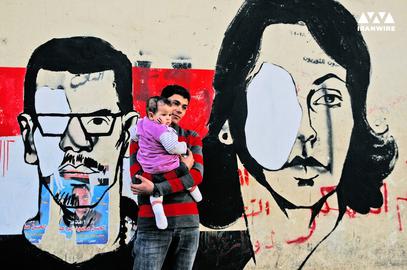
“Suddenly my head was hit by two pellets"
The clashes between the protesters and security forces was at its height. Yaghobzadeh wanted to photograph graffities, so he left Tahrir Square for Mohammed Mahmoud Street. Police and soldiers were working together to suppress the protesters. Yaghobzadeh was recording the scene with his camera.
“Suddenly my head was hit by two pellets. They were the size of a pea and were metallic, just like the metal pellets that they fire in Iran.”
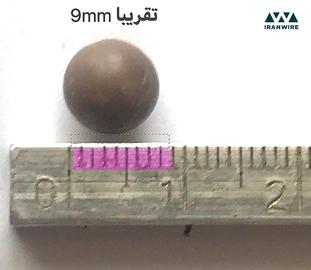
“They wanted to shoot me in the eye,” Yaghobzadeh said. “The pellet would have been in my eye if I had not turned my head. I fell to the ground after I was shot."
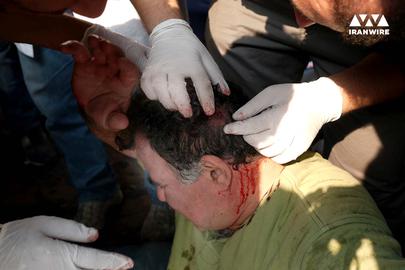
Yaghobzadeh was brought to the medical tent of the revolutionaries and one of the pellets was removed from his head: “I was in pain and said I didn't want the other pellet to be taken out. I returned to Paris and I had surgery...The X-ray clearly showed that the pellet was lodged near my eye.”
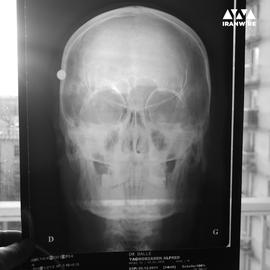
Yaghobzadeh continued taking pictures of the Egyptian revolution, including of men and women who were wearing symbolic eyepatches to show support for the protesters who had been shot blind. Some had the name of a victim written on the eyepatch.
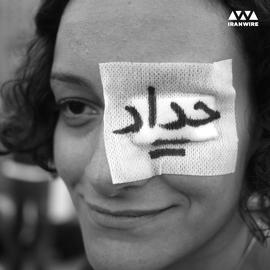
Intentional or Accidental?
A protester who had lost an eye filed a complaint after the Muslim Brotherhood came to power in 2012, and the courts prosecuted the culprit.
“The government had changed hands and could hold the agents of the previous government accountable," Yaghobzadeh said. "They had videos and finally arrested the assailant, a member of the military who was a sniper. He was tried and was sent to prison, Yaghobzadeh said.
Yaghobzadeh, who has witnessed many violent clashes around the world, said, “Sometimes the army uses bullets when clashes erupt. In general, people like the army and hate the police because the police is under the control of the interior ministry while the army is seen as the protector of the country and an institution shared by the government and the people. But [Egypt] was the first case of a revolution where things were not like that. Bullets might accidently hit the heads of the protesters, but when it's repeatedly reported that they lost their eyes in a similar way, it is clear that it's been intentional.”
For the same reason, Yaghobzadeh found the cases of Iranian protesters who had suffered eye injuries worthy of attention: “When the first stories of protesters who had been blinded were published, I told myself that it must have been accidental. During the protests, I was glued to Twitter and looked again at the archive of my pictures of protesters who had been blinded in Egypt. But every day new cases of Iranian protesters being blinded were published, and there is evidence that these protesters were intentionally blinded.”
During the Yellow Vests protests in France, a number of demonstrators were blinded as well, although not in the same way than in Egypt or Iran. One day, Yaghobzadeh was standing in Paris's Bastille Square next to a protester named Jérôme Rodrigues, when suddenly the man fell to the ground: “I though he wanted to hide but suddenly I noticed that his eye was filled with blood. Rodrigues lost his eye and I took his picture right at that moment, a picture that, legally speaking, is a good piece of evidence.”
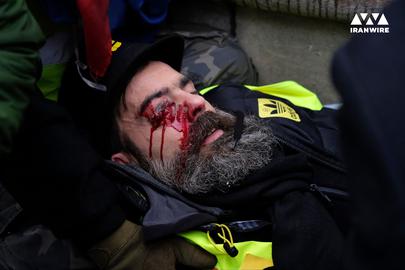
During the Yellow Vests protests in November of 2018, at least 40 demonstrators sustained serious eye injuries. The victims have filed many complaints and the government eventually acknowledged that the police used excessive force.
In France too, protesters took to the streets wearing symbolic eyepatches in support of the victims and in protest against police violence.
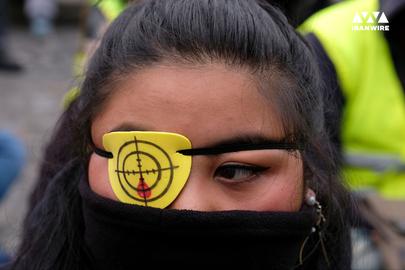
Who Gave the Order?
In Egypt and Iran, there is little doubt that what happened was intentional and widespread.
The victims in Iran have been asking the same question as Yaghobzadeh: Who gave the order?
“For me, this question remains unanswered: Who or which agency gave the order to blind the protesters? Blinding the protesters in Iran is systematic, not accidental. When hundreds of people have been injured in the eye over several months and in all the cities where protests took place, this question becomes more germane: Who ordered the blinding of the protesters? Evidence shows that these were not spontaneous acts” of violence."
visit the accountability section
In this section of Iran Wire, you can contact the officials and launch your campaign for various problems





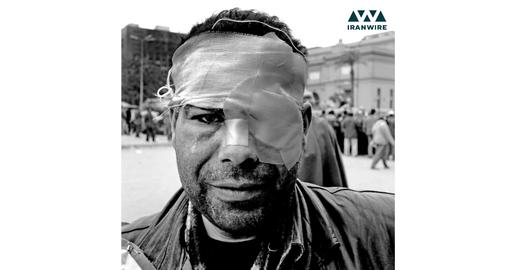











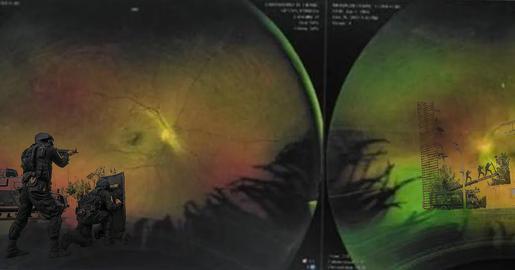
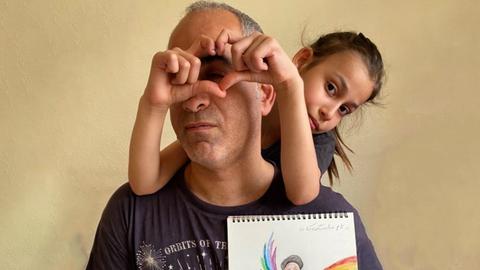
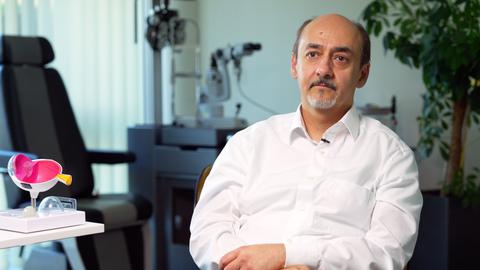



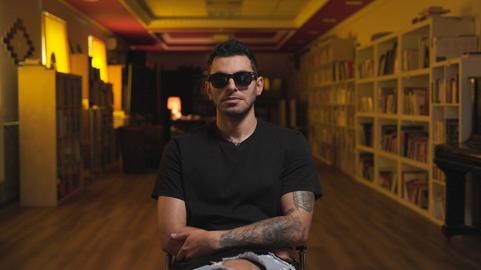






comments